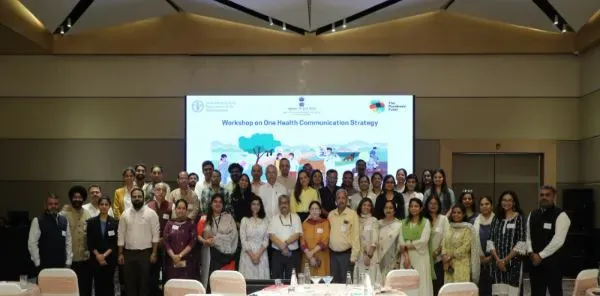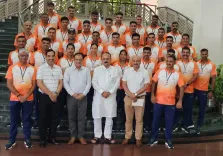Is People-Centric Local Communication Essential for Disease Surveillance and Pandemic Preparedness?

Synopsis
Key Takeaways
- Importance of local communication in health.
- One Health approach integrates multiple health sectors.
- Coordinated communication enhances disease surveillance.
- Engaging communities is critical for pandemic preparedness.
- Effective messaging leads to better health outcomes.
New Delhi, June 21 (NationPress) The Ministry of Fisheries, Animal Husbandry and Dairying has emphasized the significance of developing people-centric and locally oriented communication strategies to enhance disease surveillance and pandemic preparedness throughout the nation.
To fortify pandemic readiness in India, the Department of Animal Husbandry and Dairying (DAHD), in partnership with the Food and Agriculture Organization (FAO) of the UN, hosted a One Health Communication Strategy Workshop in New Delhi.
This workshop highlighted the necessity for a coordinated and effective communication framework that supports India's initiatives in improving animal health systems and pandemic preparedness via the One Health approach.
According to the Ministry, India is dedicated to advancing the One Health agenda by enhancing disease surveillance, boosting frontline capabilities, and encouraging inclusive public participation through strategic and well-coordinated communication.
Animal Husbandry Commissioner (AHC) Dr. Abhijit Mitra stressed the critical role of a clear and unified communication strategy in realizing the objectives of the Pandemic Fund project.
“Utilizing simple, locally understood language is vital to ensure that our messages effectively reach and resonate with communities,” Mitra stated.
“Delivering the right message to the right audience at the right moment is crucial for creating a meaningful impact,” he further added.
Mitra pointed out that effective communication serves not only as an outreach tool but also as a fundamental enabler of behavior change, inter-sectoral coordination, and risk mitigation.
Dr. Konda Chavva, Assistant FAO Representative in India, noted that communication is a core component of the One Health approach.
“Communication acts as the essential link between knowledge and behavior, and between policy and practice. It ensures that our efforts translate into tangible actions and positive impacts,” he highlighted.
The workshop also underscored the significance of the One Health Strategy Document, which is currently under development.
This national framework will direct collaborative efforts across the animal, human, and environmental health sectors, with the aim of institutionalizing a sustainable and resilient health security ecosystem in India.
Participants engaged in technical sessions and group exercises focused on message design, risk communication, and cross-sector coordination.








